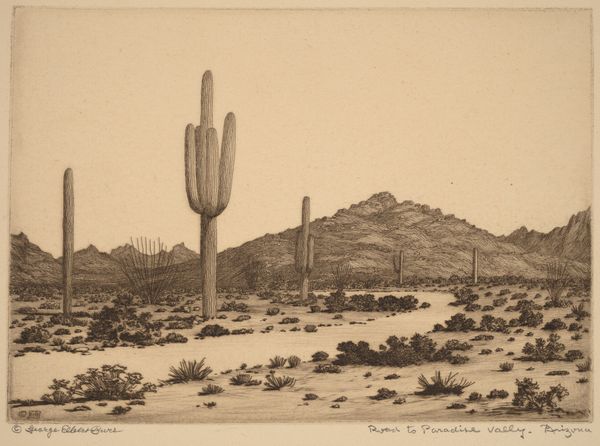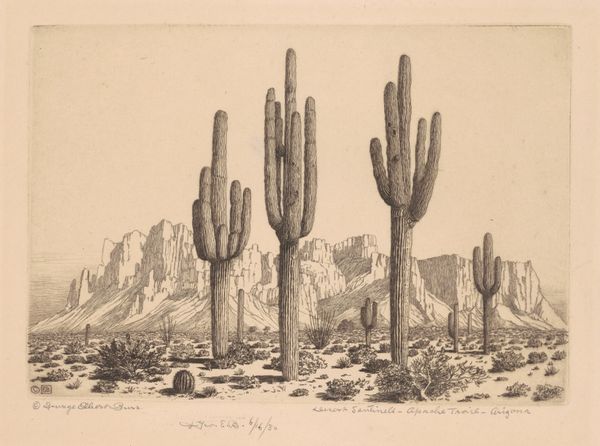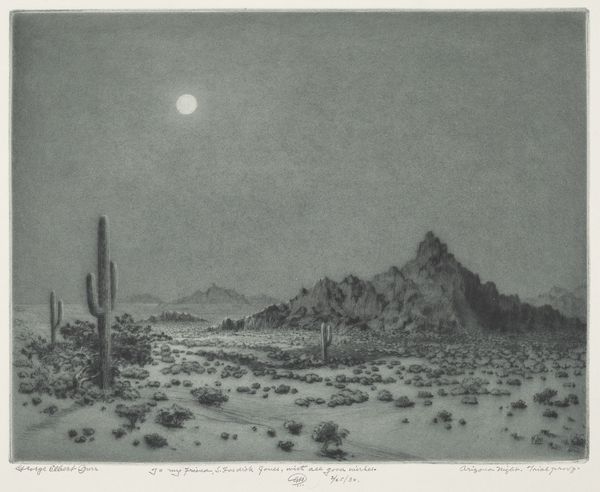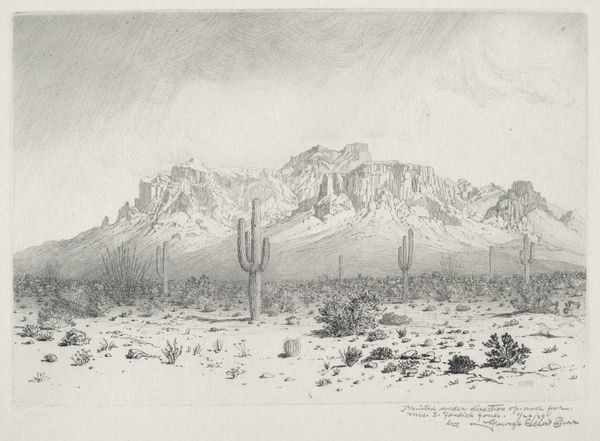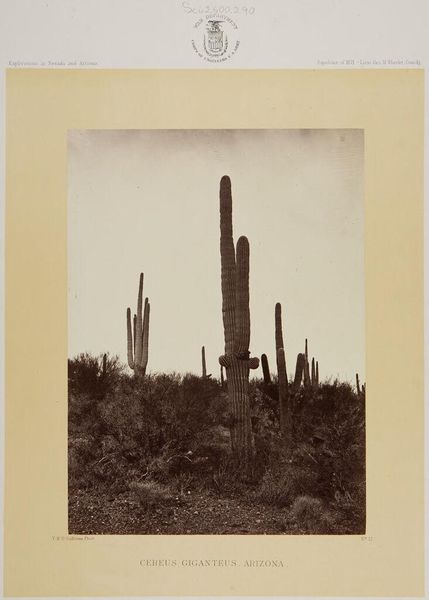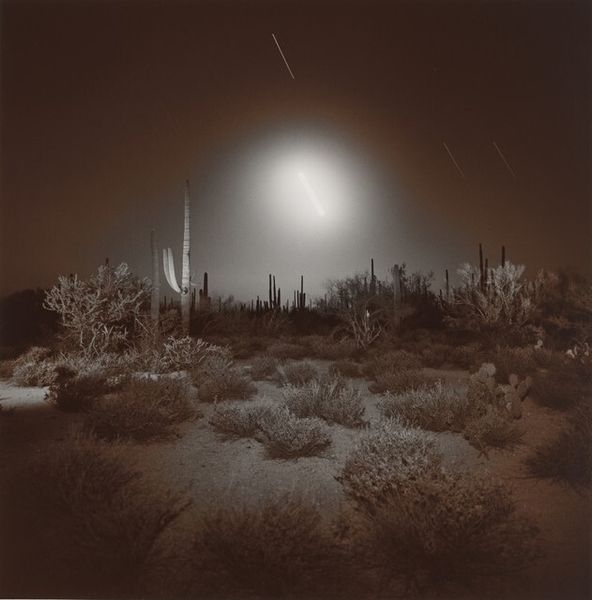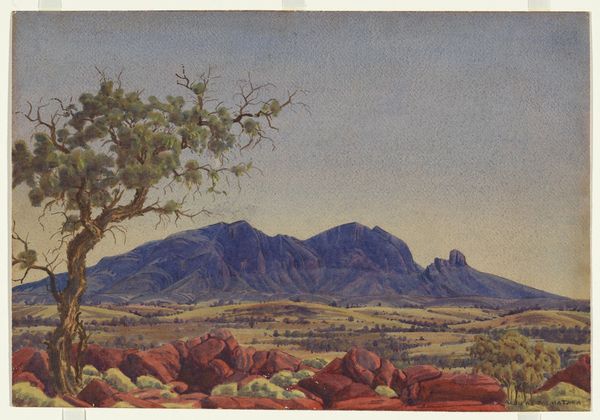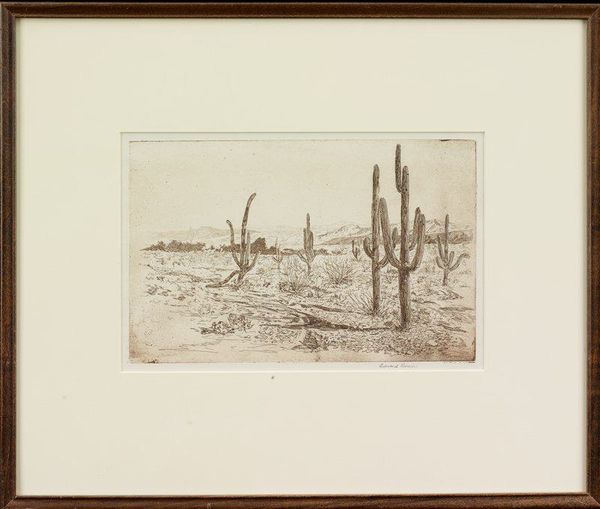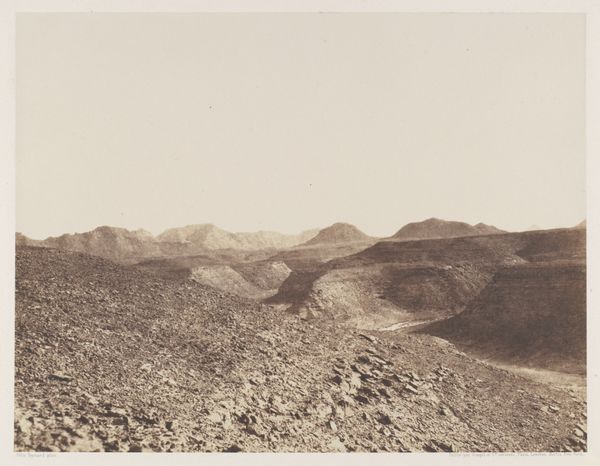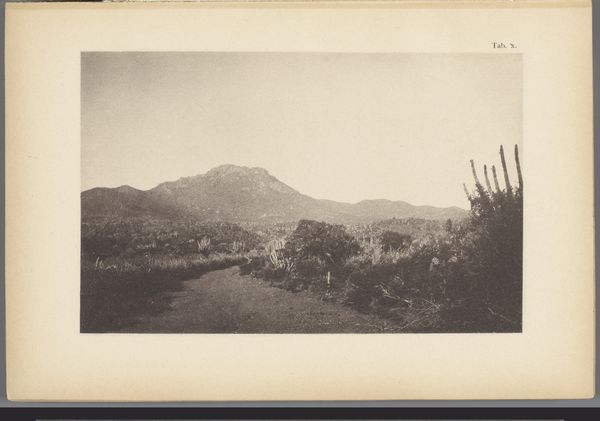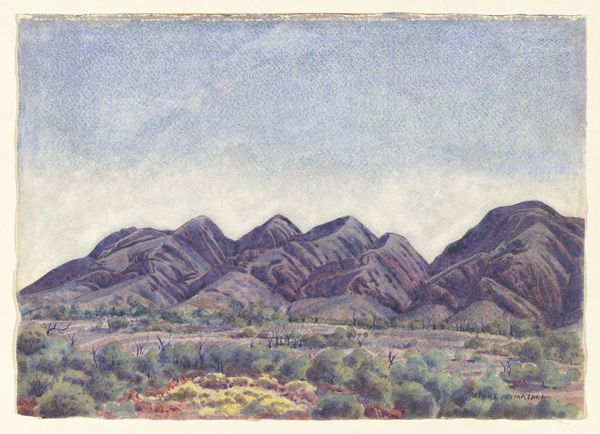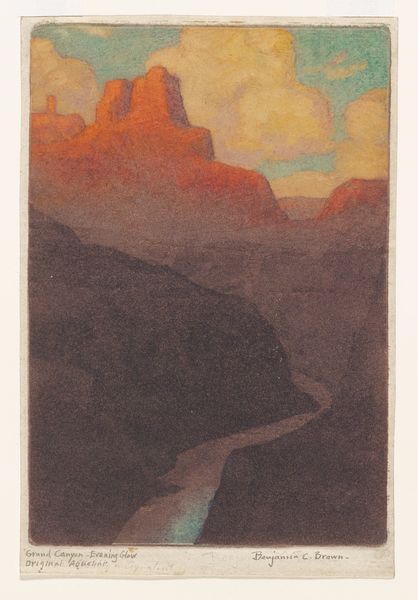
drawing, print, dry-media, charcoal
#
drawing
# print
#
landscape
#
charcoal drawing
#
dry-media
#
geometric
#
charcoal
#
realism
Dimensions: plate: 24.9 × 19.9 cm (9 13/16 × 7 13/16 in.) sheet: 33.8 × 27.8 cm (13 5/16 × 10 15/16 in.)
Copyright: National Gallery of Art: CC0 1.0
Editor: Here we have George Elbert Burr's "New Moon and Evening Star," created around 1932 using charcoal. The landscape is really quite striking, but also a little ominous. What do you see in this piece? Curator: What strikes me is the depiction of the American Southwest during the Depression era. Burr presents us with this seemingly untouched landscape, yet we must question: untouched by whom? This region carries the weight of settler colonialism and its impact on indigenous populations. What appears to be serene and majestic might actually represent dispossession and cultural erasure. Editor: I see your point. The landscape tradition does have a complicated history. Does the symbolism of the moon and star contribute to this reading? Curator: Absolutely. The 'new moon' and 'evening star' can be interpreted as symbols of hope or new beginnings, but within this historical context, they become charged with a critical awareness. Who is offered this "new beginning?" What is being illuminated, and what remains obscured by the shadows? It provokes us to confront the myth of the American West and its inherent inequalities. The muted tones and sharp contrast also mirror the harsh realities and the resilient spirit of those times. Consider the Dust Bowl migrations. Editor: So, rather than just appreciating the aesthetic beauty, we should be considering the social and political narratives at play. Curator: Precisely. How can we, as viewers, engage with this artwork responsibly, acknowledging its complex relationship to land, identity, and power? Editor: I never considered approaching landscape art from that angle before. It's given me a lot to think about regarding art's role in reflecting and perpetuating social structures. Curator: Indeed. By questioning these seemingly simple representations, we can develop a more nuanced and critical understanding of art history.
Comments
No comments
Be the first to comment and join the conversation on the ultimate creative platform.
